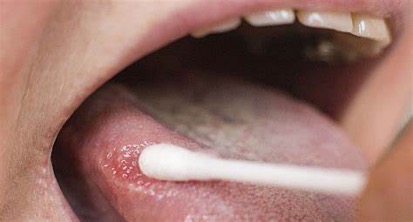Noninvasive, Low-Cost Test Accurately Diagnoses Oral Cancer in 30 Minutes
March 7, 2024
Source: drugdu
 247
247
 Oral cancer comprises about 90% of head and neck cancer (HNC), which ranks as the seventh most common type of malignancy globally. HNC constitutes roughly 5% of all cancer cases worldwide, with approximately 640,000 new cases annually, leading to around 350,000 deaths. Its incidence is particularly increasing in developing countries. These cancers predominantly affect socioeconomically disadvantaged populations and underserved communities. Diagnosing oral cancers and precancerous mouth lesions early and accurately presents significant challenges. Traditional biopsy methods are not only expensive and invasive, causing stress and potential complications for patients, but also unfeasible for repeated screenings of the same lesion. Now, researchers have developed a noninvasive, affordable test for detecting oral cancer, monitoring precancerous lesions, and determining the need for a biopsy.
Oral cancer comprises about 90% of head and neck cancer (HNC), which ranks as the seventh most common type of malignancy globally. HNC constitutes roughly 5% of all cancer cases worldwide, with approximately 640,000 new cases annually, leading to around 350,000 deaths. Its incidence is particularly increasing in developing countries. These cancers predominantly affect socioeconomically disadvantaged populations and underserved communities. Diagnosing oral cancers and precancerous mouth lesions early and accurately presents significant challenges. Traditional biopsy methods are not only expensive and invasive, causing stress and potential complications for patients, but also unfeasible for repeated screenings of the same lesion. Now, researchers have developed a noninvasive, affordable test for detecting oral cancer, monitoring precancerous lesions, and determining the need for a biopsy.
The findings of the study by a team of researchers, led by Case Western Reserve University (Cleveland, OH, USA), are based on a novel scoring system that assesses the levels of two proteins in cells collected from suspicious oral lesions in dental or ear, nose, and throat (ENT) clinics. The two proteins in question are human beta defensin 3 (hBD-3), which is highly expressed in early-stage oral cancer, and hBD-2, whose levels remain low or unchanged. The test calculates the beta defensin index (BDI) by comparing the ratio of hBD-3 to hBD-2 at the lesion site against the ratio at a normal site. A BDI above a certain threshold indicates the presence of cancer, while a lower score suggests its absence. The BDI, determined through routine lab procedures, has been independently validated at two different facilities using the same protocols.
This lab-based method could significantly reduce the need for biopsies in primary care clinics by up to 95%, helping clinicians identify patients who genuinely require a biopsy. The test is particularly advantageous in developing countries, where oral cancer is prevalent and pathology services are often inadequate or non-existent. Additionally, the positive outcomes from this lab-based approach have led to the creation of a point-of-care (POC) device. This innovative POC diagnostic tool, which measures the protein ratio, can be used directly in clinics and deliver results in about 30 minutes.
“When we first discovered hBD-3, we saw it acted as a ‘good guy,’ involved in wound-healing and killing microbes,” said Aaron Weinberg, chair of the Department of Biological Sciences at the Case Western Reserve School of Dental Medicine and the study’s lead researcher. “When we found it was regulated the same way certain cells grow uncontrollably, we started studying hBD-3 in the context of oral cancer.
“Imagine our surprise when this Dr. Jekyll turned out to be Mr. Hyde,” he said. “We found it was not only promoting tumor growth but was overexpressed in the early stages of the disease, while another member, hBD-2, wasn’t changing. This difference in levels of expression of the two proteins compared to the opposite side in the same patient led us to examine the BDI’s ability to distinguish cancer from benign lesions.”
Source:
https://www.labmedica.com/molecular-diagnostics/articles/294800464/noninvasive-low-cost-test-accurately-diagnoses-oral-cancer-in-30-minutes.html
Read more on
- Breaking the Mold and Forging a New Path! From Insulin Technology Pioneer to Global Innovation Competitor December 4, 2025
- A subsidiary of Kingfriend Pharmaceutical Co., Ltd. has received FDA approval for its self-developed injectable dapavancin December 4, 2025
- Major ophthalmic new drug successfully completed Phase III trials December 4, 2025
- Simcere Pharmaceutical and Wangshan Wangshui have reached an exclusive licensing agreement for deuterium remidevir hydrobromide for new indications such as RSV infection December 4, 2025
- SAL0140 tablets approved for clinical trials for the treatment of chronic kidney disease December 4, 2025
your submission has already been received.
OK
Subscribe
Please enter a valid Email address!
Submit
The most relevant industry news & insight will be sent to you every two weeks.



